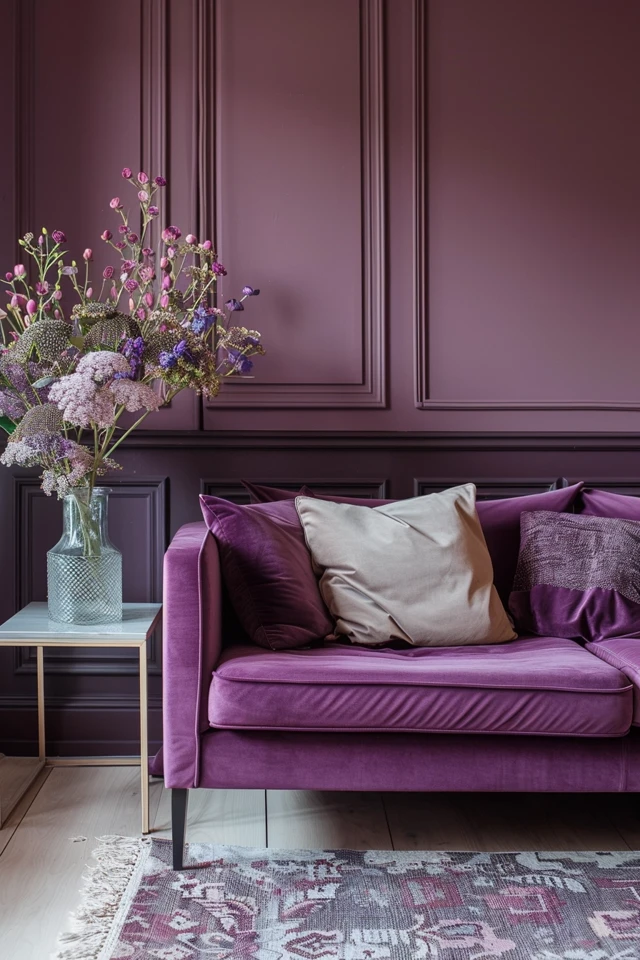To create the perfect mauve shade, you need to have a basic understanding of color theory. Purple is a combination of red and blue, but the specific shades of red and blue you use will determine the hue of mauve you achieve. It’s important to consider the color bias of your reds and blues, as well as whether they are warm or cool.
Reds with a blue bias and cool blues, like Alizarin Crimson and Ultramarine Blue, are great for creating mauve. On the other hand, warm reds and blues with a green bias should be avoided, as they can result in muddy colors. Experimenting with different combinations and mixing in white or gray can help you achieve the perfect mauve shade.
Key Takeaways:
- Understanding color theory is essential for creating the perfect mauve shade.
- Consider the color bias and temperature of your reds and blues when mixing mauve.
- Reds with a blue bias and cool blues work well for creating mauve.
- Avoid warm reds and blues with a green bias, as they can result in muddy colors.
- Experimenting with different combinations and adding white or gray can help you achieve the desired mauve shade.

Understanding Color Bias and Complementary Colors
When it comes to color mixing, understanding color bias and complementary colors is key to achieving the desired results. Color bias refers to the additional color or hue that certain primary colors carry. Different reds and blues have varying degrees of color bias, which can significantly affect the outcome of your mixture.
Color Bias and Mixing Purple
When mixing purple, it’s important to be aware of the color bias present in the reds and blues you are using. Reds and blues with a yellow bias should be avoided, as they can result in dull or muddy colors. Opt for reds with a blue bias and cool blues like Alizarin Crimson and Ultramarine Blue. These colors will enhance the vibrancy and richness of your purple shades.
Complementary Colors and Desaturation
Complementary colors are pairs of colors that are opposite each other on the color wheel. When these colors are mixed together, they can create desaturated or muted colors. For example, mixing complementary colors red and green will result in a shade of brown. Therefore, understanding the concept of complementary colors is crucial in color mixing.

Experimentation and Achieving Vibrancy
While understanding color bias and complementary colors is essential, don’t be afraid to experiment with different combinations and color mixing techniques. By exploring alternative color choices, you can create vibrant shades of purple that go beyond the traditional red and blue mixture.
Remember to create color charts and keep track of your mixing ratios to better understand the relationships between different colors and achieve consistent results. Adding white or black to your mixtures can also expand the range of purples you can create.
By harnessing the power of color bias, understanding the impact of complementary colors, and embracing experimentation, you can elevate your color mixing skills and create beautiful and vibrant shades of purple for your artwork and DIY projects.
Mixing Vibrant Purple with Alternative Color Choices
While the traditional red and blue combination can create purple, there are alternative color choices that can result in a more vibrant shade. By exploring different options, you can unleash your creativity and achieve unique and eye-catching purples.
“Using Turquoise Blue instead of Primary Blue and Magenta instead of Primary Red can produce brighter and more jewel-toned purples.”
Instead of sticking to the conventional primary colors, consider experimenting with Turquoise Blue and Magenta. Turquoise Blue, a bright and energetic hue, can add a lively twist to your purple mixtures. Magenta, with its rich and intense tone, can help create deeper and more saturated purples.
To further enhance the vibrancy of your purple, you can incorporate Fluorescent Pink paint into your mixtures. This bold and dynamic color adds an extra burst of intensity, making your purples stand out.

Color Mixing Tips
Here are some tips to keep in mind when mixing vibrant purple:
- Experiment with ratios: Adjusting the amount of each color can significantly impact the final shade of purple. Try mixing different ratios to find the perfect balance that suits your vision.
- Add white or black: Incorporating white or black paint into your mixture can alter the value and intensity of your purple, allowing you to achieve a wider range of shades.
By exploring alternative color choices and experimenting with different ratios and additions, you can create vibrant purples that make a statement in your artwork or DIY projects.
Conclusion
Mixing mauve requires careful consideration of color theory, color bias, and complementary colors. By understanding the characteristics of different reds and blues, avoiding colors with a yellow bias, and experimenting with alternative color choices, you can achieve a wide range of mauve shades.
Remember to take your time and create color charts to better understand the relationships between different colors. With practice and a solid foundation in color mixing techniques, you’ll be able to confidently create the perfect mauve for your DIY projects and artwork.

